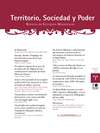Resumen
Resumen: El Chao Samartín es un paraje inmediato al pueblo de Castro, en la localidad asturiana de Grandas de Salime, donde las evidencias de asentamientos estables fortificados se remontan a finales de la Edad del Bronce. La ocupación del lugar se prolongó durante la Edad del Hierro hasta bien consumada la implantación romana, cuando, durante la segunda mitad del siglo ii d. de C., un violento seísmo asoló el poblado y precipitó su definitivo abandono. Por el momento, el registro arqueológico indica un largo hiato en la utilización del Chao Samartín, hasta que a partir del siglo viii d. de C., en tiempos medievales y coincidiendo con los albores de la monarquía asturiana, se constata el expolio sistemático de las ruinas del poblado castreño y osterior desarrollo de un espacio funerario en torno a la más notable construcción de época romana, una domus del siglo i d. de C. ricamente ornamentada con estucos y pinturas murales. En este artículo se reflexiona acerca del significado ideológico que animó, desde la Prehistoria, la selección de determinados emplazamientos como lugar de habitación y de cómo su profundo arraigo en la mentalidad popular se proyecta a lo largo de los siglos para seguir individualizándolos ritualmente en el paisaje mediante diversos mecanismos.
Palabras clave: castros, paleodemografía, tipología funeraria, carbono 14, geografía sagrada, marcadores de estrés.
Abstract: The Chao Samartin site is located adjacent to the small village of Castro, in the Grandas de Salime Township (Asturias, northern Spain). The site displays evidence of fortified settlements from the Late Bronze Age, in the transition between the 9th and 10th centuries b.C. Site occupation persisted during the Iron Age, until Roman control was well established. At that time (second half of the 2nd Century a.D.), a violent earthquake destroyed the settlement, triggering its sudden abandonment. Current archaeological data display a prolonged hiatus in site activity after this event, until the 8th century a.D. At this moment, a systematic process of extraction and re-utilization of site materials is detected, followed by the establishment of a Medieval necropolis. The new funerary space flanks the most prominent Roman structure at Chao Samartín, a domus displaying rich ornaments and mural paintings dated in the 1st century a. D. The present study discusses the ideological components underlying the repeated election of certain locations, such as Chao Samartín, as occupation areas in a process spanning from Prehistory. The symbolic meaning of these locations persists along the ages, through their successive and repeated individualization by the local populations through different mechanisms. As a matter of fact, the raison d’être of the Asturian castra (hillforts) has an ideological and symbolic dimension transcending the mere military and defensive advantages provided by their emplacement and fortifications. This dimension explains the persistence of their toponyms in the local cultural traditions, their adoption by the Medieval Catholic Church as liturgical landmarks or, in sum, their relevance as primary references in what has been termed as the Sacred Geography of Asturias. This symbolic significance is not an exclusive trait of Asturian hillforts. The sepulcher attributed to Apostle St. Jacob in the neighboring Galicia, whose discovery set the foundation of St. Jacob’s route of pilgrimage, is located precisely in a hillfort. A comprehensive description of the Chao Samartín Medieval necropolis is presented, including location and spatial distribution of the burials, as well as burial typologies. The excavated burials can be divided into two main categories, depending on whether they are encased in a complete stone structure, or just display a simple stone cover. These typologies can be sub-divided into different subcategories, based on masonry features or the biological profile or number of individuals sharing the burial. The study examines the most important paleodemographic characteristics of the recovered human remains. Stress is set on those demographic markers that could shed some light on the origin of the necropolis, either as the result of an expansion of the local population, or of a migratory influx linked to the establishment of St. Jacob’s Road. The human sample consists of a minimum number (mni) of 61 individuals, with a predominance of pre-pubescent individuals and mature and senile adults, over adolescents and young adults. This age distribution is consistent with the attrition pattern more habitual in stable populations from this chronology, rather than with catastrophic patterns expected from punctual migratory or epidemiologic events. The adult sex distribution shows an overrepresentation of males over females, approximately resulting in a 2:1 sex ratio. Still, the high proportion of infants, combined with the predominance of young individuals (in the age range of first parturition) among those not allowing for sex diagnosis, strongly suggest that the unbalanced age ratio is related to identification biases, rather than to a potential migratory influx. Besides the relatively high average stature, and the moderate degree of sexual dimorphism observed in the sample, other populational stress indicators depict a relatively healthy and wealthy population for the chronology. The Chao Samartín sample displays surprisingly good levels of dental health, low frequencies of ante-mortem trauma, absence of peri-mortem trauma, and low to moderate expression of osteoarthritic and degenerative processes in the articular surfaces. The large sample size, combined with the quality of the associated archaeological information, and the virtual absence in the region of similar comprehensively studied collections, confers an extraordinary value to the Chao Samartín Medieval sample as a necessary reference collection for the study of Asturian Medieval populations. Finally, the study is completed with the presentation of the existing C14 dates, establishing the chronological intervals within which the described processes took place.
Keywords: hillforts, paleodemography, funerary typologies, c14, sacred geography, stress markers.

